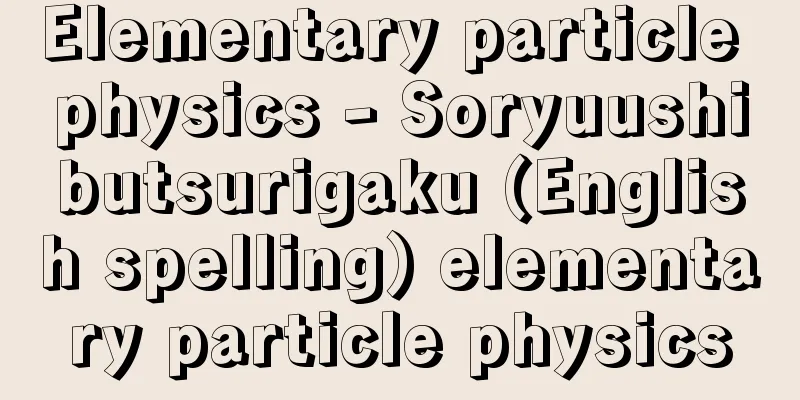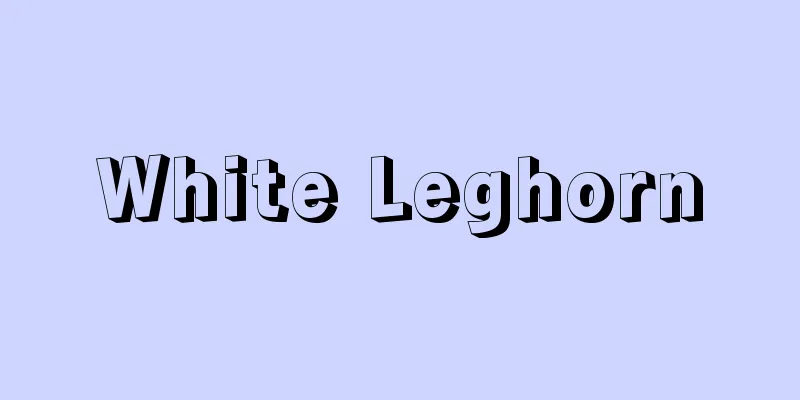Elementary particle physics - Soryuushibutsurigaku (English spelling) elementary particle physics

|
This field aims to clarify the most fundamental laws of physics by studying the properties and structure of elementary particles and the interactions between them. Since experimental research into elementary particles requires particles with extremely high energy, the experimental part of physics is called high-energy physics. The quest for the origin of matter has led to the discovery of elementary particles such as photons, protons, neutrons, positrons, muons, and pi mesons in the half century since the discovery of the electron at the end of the 19th century, but since the 1950s, high-energy accelerators have been built one after another, and new elementary particles have been discovered. Today, elementary particles are classified into three types: quarks, leptons, and gauge bosons. On the other hand, the interactions between these elementary particles are broadly divided into strong interactions, electromagnetic interactions, weak interactions, and gravitational interactions. In the 1970s, it was revealed that all of these interactions can be described by renormalizable quantum theories that follow the principle of gauge invariance. In particular, the electroweak unified theory, which unifies and describes the electromagnetic and weak interactions, was successful and became the standard theory of elementary particles along with the quantum chromodynamics of the strong interaction. A grand unified theory has also been proposed that attempts to further unify these interactions. According to the Grand Unified Theory, quarks can be converted into leptons, which causes the proton to decay into a positron after a certain lifetime. Efforts are ongoing to verify this proton decay prediction. In addition, superstring theory, which includes gravitational interactions as the ultimate unified theory, is also a subject of vigorous research. Source: Encyclopaedia Britannica Concise Encyclopedia About Encyclopaedia Britannica Concise Encyclopedia Information |
|
素粒子の性質や構造,素粒子間の相互作用を研究し,物理学の最も基本的な法則を明らかにすることを目指す分野。素粒子の実験的研究には非常に高いエネルギーの粒子が必要なので,その実験的部分を特に高エネルギー物理学と呼ぶ。物質の根源の探求は 19世紀末の電子の発見以来,半世紀の間に光子,陽子,中性子,陽電子,μ粒子,π中間子などの素粒子の発見をもたらしたが,1950年代以降,高エネルギー加速器が次々と建設され,新しい素粒子の発見がこれに続いた。今日では素粒子はクォーク,レプトン,そしてゲージボソンの三つに分類されている。一方,これら素粒子の相互作用は強い相互作用,電磁相互作用,弱い相互作用,重力相互作用に大別される。1970年代に入り,これらの相互作用はすべてゲージ不変性の原理に従う繰り込み可能な量子論で記述されることが明らかになった。特に電磁相互作用と弱い相互作用を統一して記述する電弱統一理論が成功を収め,強い相互作用の量子色力学とともに素粒子の標準理論となった。これらの相互作用をさらに統一しようとする大統一理論も提唱されている。その大統一理論によるとクォークはレプトンに転換することが可能で,このため陽子はある寿命で陽電子へ崩壊する。この陽子崩壊の予言を検証する努力も続けられている。また,重力相互作用をも含む究極の統一理論として超弦理論も研究の対象となり精力的な研究が行なわれている。
出典 ブリタニカ国際大百科事典 小項目事典ブリタニカ国際大百科事典 小項目事典について 情報 |
<<: Elementary particle model - Soryuushimokei (English spelling) elementary particle model
>>: Elementary particle - Soryushi (English spelling) elementary particle
Recommend
Amount of substance
The mole is the amount of a substance expressed as...
Jan Petrus Benjamin de Josselin de Jong
1886‐1964 A Dutch ethnologist and professor at Lei...
Linen spinning - Asaitoboseki
In Japan, linen has long been made by spinning hem...
Nature Denkmal
…Humboldt explored various parts of equatorial Am...
18th Brumaire - 18th Brumaire
On November 9, 1799 (the 18th Brumaire date of the...
Environmental formation - Environmental formation
… [Transition Progression] Succession progresses ...
Turkish Literature
Historically, Turkish literature can be broadly d...
Country of (■1)(■2) - Okono Country
...The entry for July 29, 880, in the Chronicles ...
Michiyasu Inoue
Poet and Japanese literature scholar. Born in Him...
Shenzhen
A sub-provincial city (a prefecture-level city wi...
Elkhorn fern (English spelling) elkhornfern
…The antlers are those of a large deer, named aft...
Eastern Style Two-stringed Instrument - Azuma Ryunigenkin
A type of Japanese music and its instrument. It is...
Station bell - Ekirei
〘Noun〙① A bell provided by the state to postal mes...
M103 - M103
…R Cassiopeiae, located near the border with Andr...
Namensindossament - Namensindossament
An endorsement in which the endorser writes the en...









